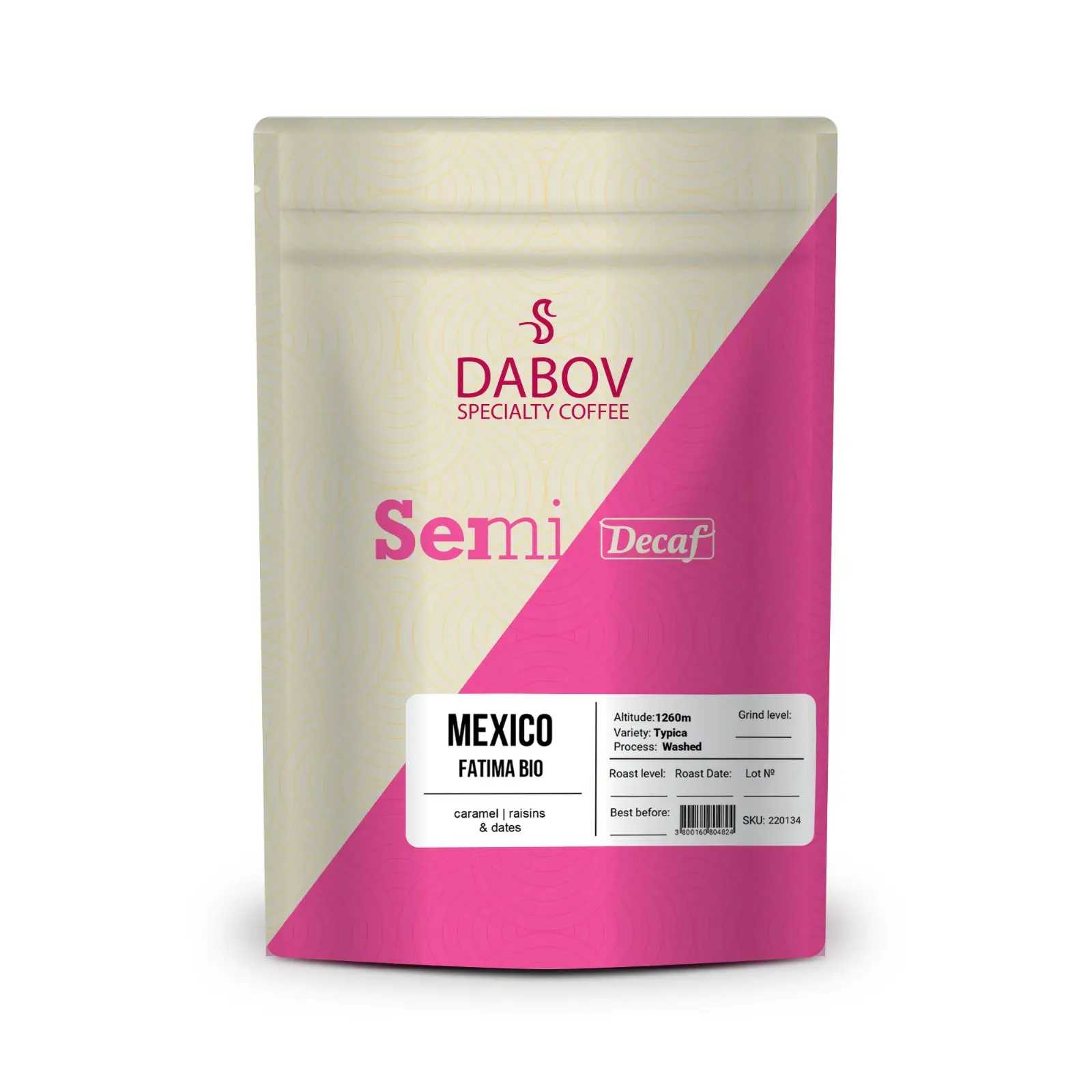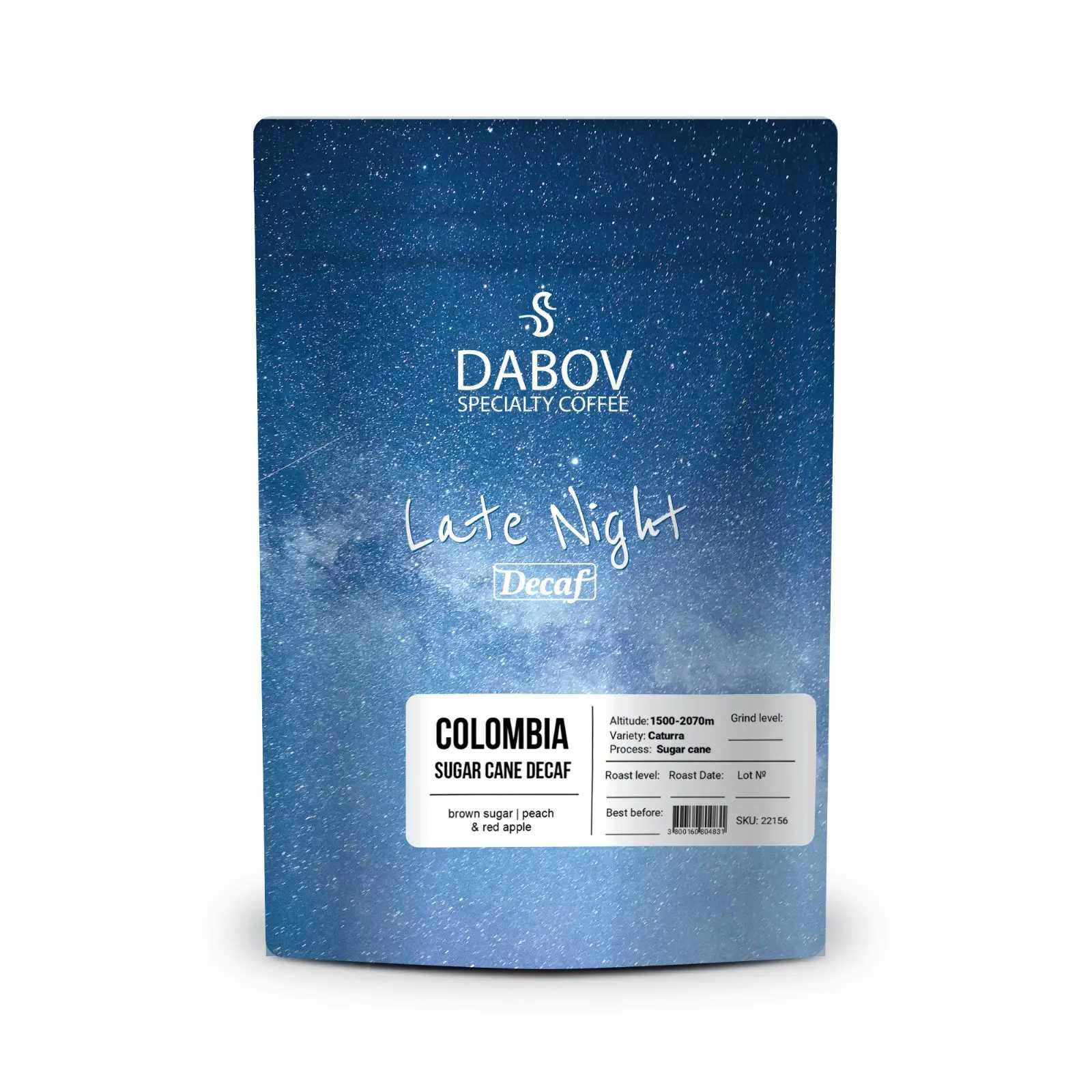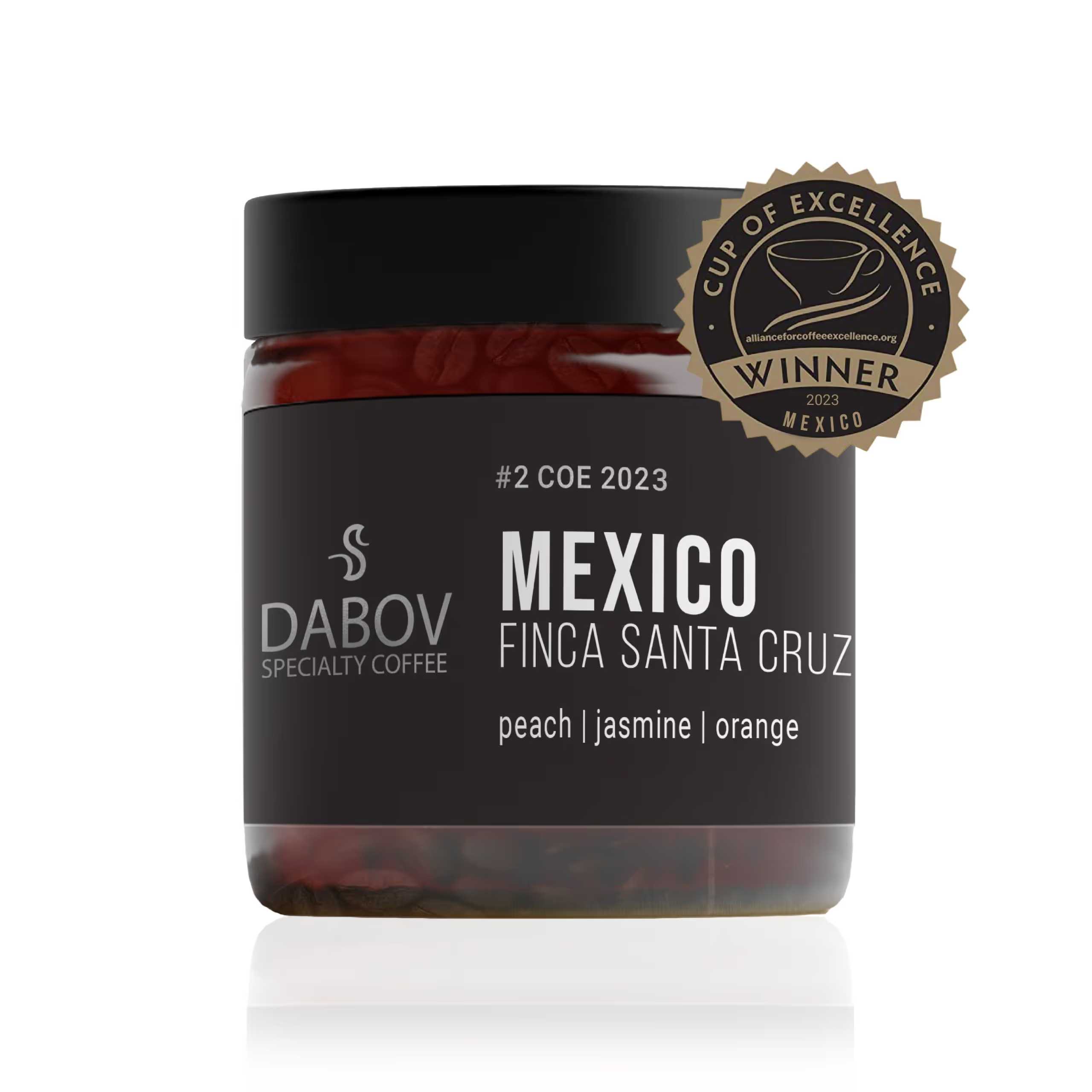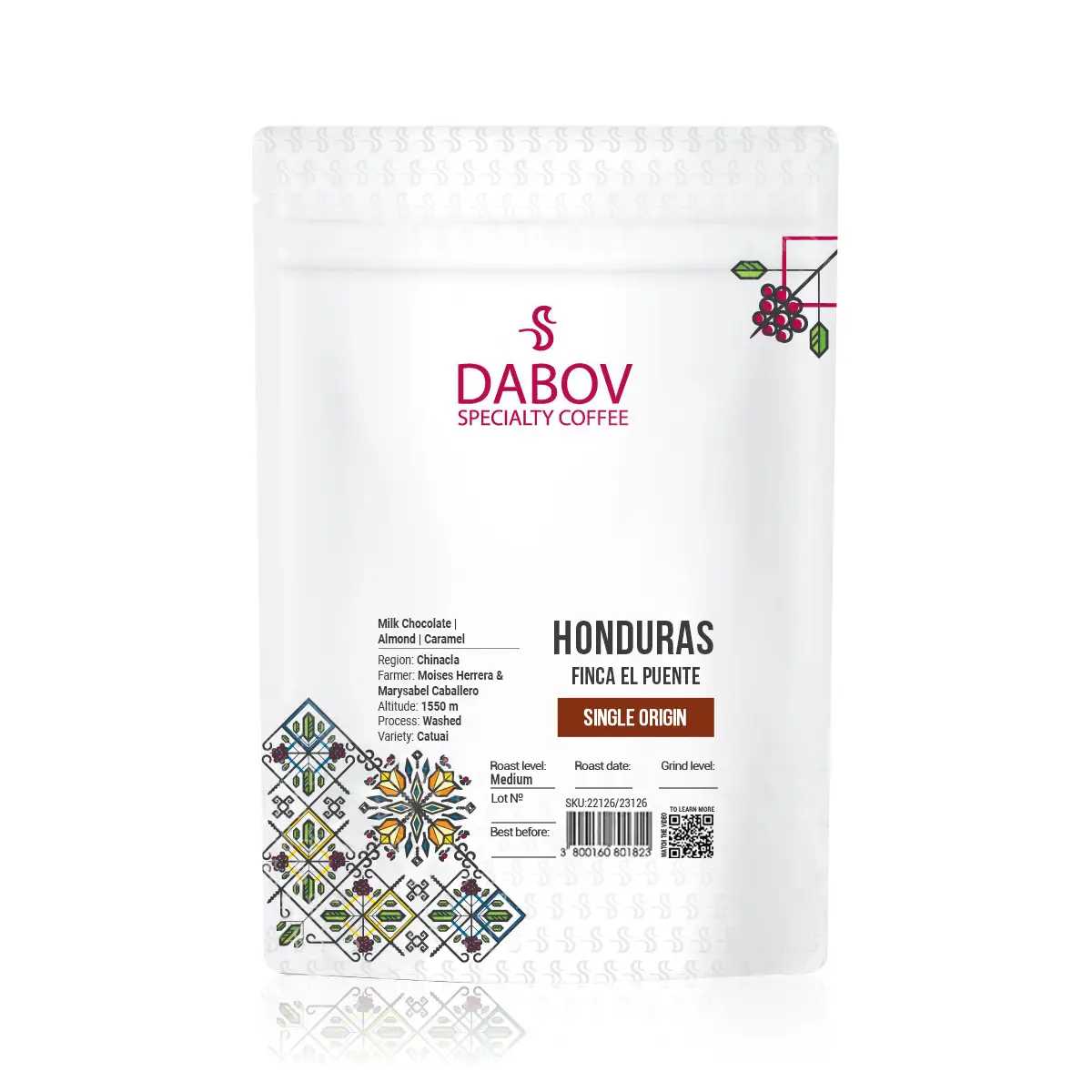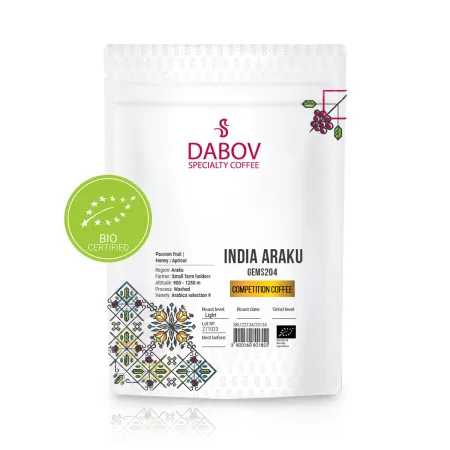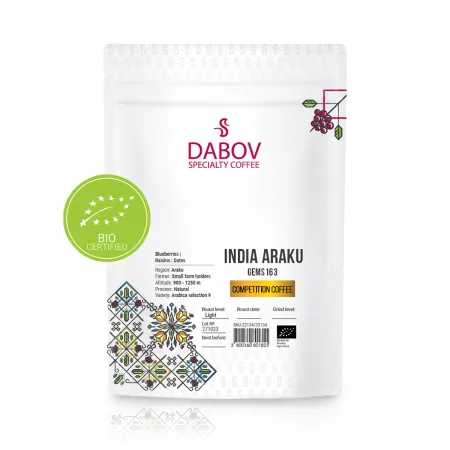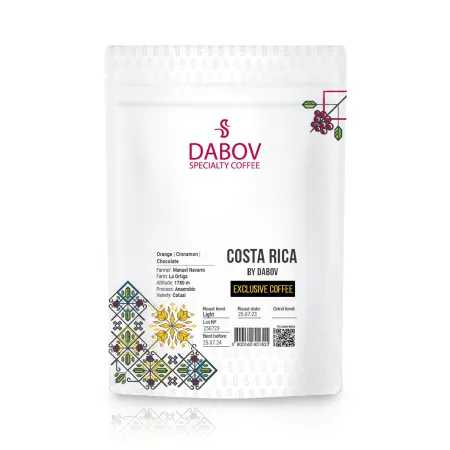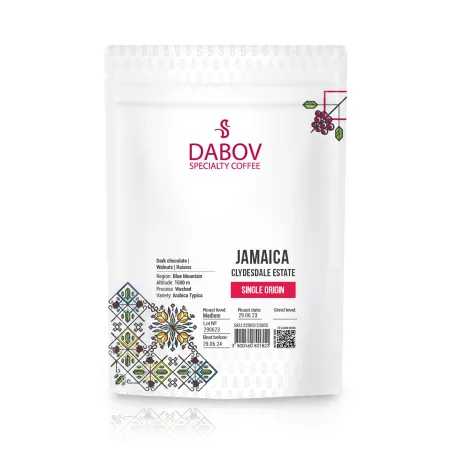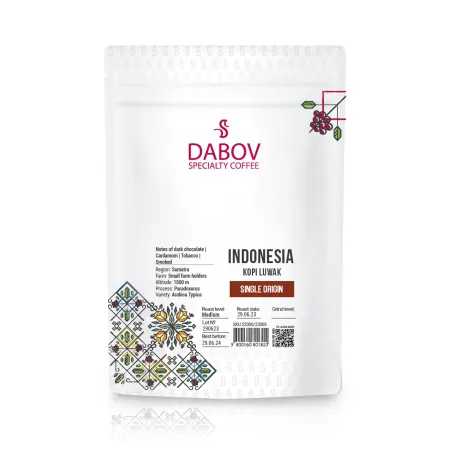How Roasting Time and Temperature Influence Coffee Acidity
Understanding how roasting time and temperature influence coffee acidity is key for coffee lovers seeking the perfect brew. Coffee acidity plays a crucial role in shaping flavor profiles, impacting everything from brightness to balance. In this article, we delve into the different types of acidity in coffee and the essential factors during roasting. Discover how time and temperature alterations can transform your favorite beans from flat to flavorful. We explore practical tips for controlling acidity and tailoring your roast profiles to achieve desired taste outcomes. Whether you're a professional roaster or a coffee enthusiast, this guide will enhance your appreciation for the intricate dance of flavors in each cup. Join us as we unravel the complexities behind coffee roasting and acidity.
Introduction
Coffee, the beloved beverage that fuels millions of people worldwide, is a complex symphony of flavors, aromas, and sensations. At the heart of this complexity lies a crucial element that can make or break the perfect cup: acidity. Coffee acidity is not just a matter of taste; it's a fundamental aspect of coffee's character that influences everything from its brightness and vibrancy to its overall flavor profile. For coffee enthusiasts and professionals alike, understanding the intricate relationship between roasting parameters and acidity is key to unlocking the full potential of every bean.
The purpose of this article is to delve deep into the fascinating world of coffee roasting, specifically exploring how roasting time and temperature influence coffee acidity. We'll unravel the mysteries behind the chemical transformations that occur during the roasting process, examine the various factors that contribute to acidity development, and provide insights into how roasters can manipulate these variables to achieve desired flavor outcomes. Whether you're a home roaster experimenting with your first batch or a seasoned professional looking to refine your craft, this comprehensive guide will equip you with the knowledge to elevate your coffee roasting game.
Section 1: Understanding Coffee Acidity
1.1 What is Coffee Acidity?
Coffee acidity is a term that often mystifies even the most dedicated coffee drinkers. Far from being a negative attribute, acidity is a prized characteristic that contributes significantly to coffee's complex flavor profile. In essence, coffee acidity refers to the bright, lively, and sometimes tart sensation experienced when sipping a well-brewed cup. This perceived brightness is not to be confused with the pH level of coffee, which is actually quite close to neutral.
The acidity in coffee is a result of various organic acids present in the beans, which are either inherent to the coffee plant or developed during the roasting process. These acids interact with our taste buds and olfactory receptors to create a multifaceted sensory experience. A coffee with well-balanced acidity will often be described as vibrant, crisp, or even wine-like, adding depth and character to the overall flavor profile.
It's important to note that acidity in coffee is not a one-dimensional attribute. Different types of acidity can evoke various flavor notes, ranging from the citrusy zing of lemon or grapefruit to the mellow sweetness of apple or the subtle complexity of phosphoric acid. The presence and balance of these acids can make the difference between a flat, uninteresting brew and a cup that dances on the palate with lively complexity.
1.2 Types of Coffee Acidity
Understanding the various types of acidity in coffee is crucial for both roasters and consumers in appreciating the nuanced flavors that different beans and roasts can offer. Let's explore some of the primary acids found in coffee and their contributions to taste:
- Citric Acid: Perhaps the most recognizable, citric acid imparts flavors reminiscent of citrus fruits like lemons, limes, and oranges. It's often more pronounced in lighter roasts and coffees from African regions. Citric acid contributes to a bright, refreshing quality that can make a coffee feel lively and invigorating on the palate.
- Malic Acid: This acid is responsible for flavors that might remind you of green apples or stone fruits. It adds a smooth, approachable tartness that can enhance the overall sweetness perception in coffee. Malic acid is often associated with coffees from Central and South America.
- Acetic Acid: While too much acetic acid can lead to an unpleasant vinegary taste, in the right amounts, it can add complexity and a slight fermented note that some coffee lovers appreciate. It's more commonly found in darker roasts or coffees that have undergone extended fermentation during processing.
- Phosphoric Acid: This acid contributes a unique, almost cola-like brightness to coffee. It's less tart than citric or malic acid but adds a pleasant crispness to the cup. Phosphoric acid is often noted in coffees from Indonesia and other Pacific islands.
- Chlorogenic Acids: These are a family of acids that are abundant in green coffee beans but break down during roasting. They contribute to the overall perceived acidity and can impart a slight astringency or dryness in the finish of a coffee.
- Quinic Acid: As chlorogenic acids break down during roasting, they can form quinic acid. This acid is responsible for the sharp, clean finish in some coffees but can also contribute to a perceived sourness if present in high amounts.
The balance and interplay of these acids create the unique flavor profile of each coffee. Roasters must carefully consider how their roasting techniques will affect the development and preservation of these acids to achieve the desired taste profile. For instance, a light roast might preserve more of the citric and malic acids, resulting in a brighter, fruitier cup, while a darker roast might develop more quinic acid, leading to a bolder, less acidic flavor.
It's worth noting that the perception of acidity can also be influenced by other factors such as the coffee's body, sweetness, and bitterness. A well-balanced coffee will have acidity that complements these other elements rather than overpowering them. This delicate balance is what roasters strive to achieve through careful manipulation of roasting time and temperature.
Section 2: Coffee Roasting Factors
2.1 The Importance of Roasting in Flavor Development
Coffee roasting is an art and science that transforms the raw, green coffee beans into the aromatic, flavorful beans we grind for our daily brew. This process is pivotal in developing the complex flavors, aromas, and yes, the acidity that we associate with great coffee. Understanding the importance of roasting in flavor development is crucial for anyone looking to master the craft of coffee production or simply appreciate their morning cup on a deeper level.
During roasting, coffee beans undergo a series of chemical reactions that dramatically alter their physical and chemical composition. As the beans are heated, they lose moisture, change color, and expand in size. But more importantly, complex organic compounds within the beans break down, recombine, and form new compounds that contribute to the final flavor profile.
One of the most significant processes that occur during roasting is the Maillard reaction. This chemical reaction between amino acids and reducing sugars produces hundreds of different flavor compounds and contributes to the browning of the beans. The Maillard reaction is responsible for many of the roasted, nutty, and caramelized flavors we associate with coffee.
Another crucial process is the caramelization of sugars, which occurs at higher temperatures. This process contributes to the sweetness and body of the coffee, as well as some of the darker, more complex flavors in medium to dark roasts.
The development of acids during roasting is particularly interesting. While some acids are present in the green beans, others are formed or transformed during the roasting process. For example, chlorogenic acids, which are abundant in green coffee, break down during roasting, potentially forming other acids like quinic acid. The rate and extent of these transformations are directly influenced by roasting time and temperature.
The roasting process also affects the volatile compounds in coffee, which are responsible for much of its aroma. As the beans are heated, these compounds are released, with different compounds becoming volatile at different temperatures. This is why the aroma of coffee changes so dramatically throughout the roasting process.
It's important to note that roasting is not just about developing flavors, but also about finding the right balance. Over-roasting can lead to the loss of delicate flavors and the development of unpleasant bitter or burnt tastes. Under-roasting, on the other hand, can result in grassy or sour flavors and a lack of depth in the cup.
The skill of the roaster lies in their ability to control the roasting process to highlight the inherent qualities of the bean while developing a harmonious flavor profile. This requires a deep understanding of how different roasting parameters affect the chemical composition of the beans and, consequently, the final taste in the cup.
2.2 Primary Factors Influencing Coffee Roasting
While the art of coffee roasting involves numerous variables, there are several primary factors that play a critical role in determining the final flavor profile, including the acidity of the coffee. Understanding these factors is essential for roasters aiming to consistently produce high-quality coffee with desired characteristics. Let's explore these key factors in detail:
- Bean Origin and Variety: The geographical origin and specific variety of coffee bean significantly influence its inherent flavor potential and acidity. For instance, beans from Ethiopia are often known for their bright, citrusy acidity, while those from Brazil tend to have lower acidity and more chocolatey notes. The altitude at which the beans are grown also affects their density and potential for acidity development during roasting.
- Processing Method: How the coffee cherries are processed after harvesting impacts the bean's flavor profile. Washed coffees often have a cleaner, brighter acidity, while natural or dry-processed coffees may have more complex, fermented notes that can influence perceived acidity.
- Roasting Time: The duration of the roast is crucial in determining the final acidity of the coffee. Longer roasting times generally result in lower acidity as acids break down under prolonged heat exposure.
- Roasting Temperature: The temperature profile during roasting significantly affects chemical reactions within the beans, influencing acid development and breakdown. Higher temperatures can lead to faster acid degradation, while careful temperature control can preserve desirable acids.
- Rate of Rise (RoR): This refers to how quickly the temperature increases during roasting. A steady, controlled rate of rise can help develop complex flavors and balanced acidity, while rapid temperature increases might lead to uneven roasting and underdeveloped flavors.
- First Crack and Development Time: The time between first crack (when beans first audibly crack during roasting) and the end of the roast is crucial for flavor development. This period greatly influences the final acidity and overall flavor balance.
- Cooling Process: How quickly and efficiently the beans are cooled after roasting can affect the final acidity. Rapid cooling helps "lock in" the developed flavors and prevent over-roasting.
- Roasting Equipment: Different types of roasters (drum, air, fluid bed) can affect heat transfer and airflow, influencing how acids develop during the roast.
- Batch Size: The amount of coffee being roasted can impact heat distribution and roasting dynamics, potentially affecting acid development.
- Ambient Conditions: Factors like humidity and air temperature can influence how the beans respond to roasting, potentially affecting the final acidity.
2.2.1 Roasting Time
Roasting time is a critical factor in determining the final acidity and overall flavor profile of coffee. The duration of the roast directly influences the chemical reactions occurring within the beans, affecting everything from acid content to sugar caramelization. Let's delve deeper into how roasting time impacts coffee acidity:
Short Roasting Times:Shorter roasts, typically associated with light to medium roasts, tend to preserve more of the bean's original acidity. During the early stages of roasting, many of the acids naturally present in green coffee beans are retained. This is why light roasts often have a brighter, more vibrant acidity that can showcase the bean's origin characteristics.
In these shorter roasts, chlorogenic acids, which are abundant in green coffee, haven't had as much time to break down. This can result in a coffee with higher perceived acidity and often more complex, nuanced flavors. Citric and malic acids, which contribute to fruity and apple-like notes respectively, are more likely to be preserved in shorter roasts.
However, it's important to note that very short roasting times can result in underdeveloped flavors. The beans need sufficient time to undergo the Maillard reaction and initial stages of caramelization to develop a balanced flavor profile. Extremely short roasts might lead to grassy or overly sour tastes due to incomplete flavor development.
Long Roasting Times:As roasting time increases, the acids in coffee beans begin to break down. This is why darker roasts, which require longer roasting times, generally have lower acidity. The longer exposure to heat causes more of the chlorogenic acids to degrade, potentially forming other compounds like quinic acid, which can contribute to a perceived bitterness rather than acidity.
Extended roasting times also lead to more sugar caramelization and oil development on the bean surface. This results in the characteristic flavors of dark roasts: more roasted, bitter, and sometimes smoky notes, with less perceived acidity. The bright, fruity notes associated with acids in lighter roasts give way to deeper, more intense flavors.
It's crucial to understand that while longer roasting times reduce acidity, they don't necessarily improve the overall flavor. Over-roasting can lead to a loss of the bean's unique characteristics and result in a flat, overly bitter taste.
The Impact of Time on Specific Acids:
- Chlorogenic Acids: These start to break down significantly after the first crack, with longer roasts having progressively less.
- Citric and Malic Acids: These are more heat-sensitive and begin to degrade earlier in the roast, contributing to the loss of bright, fruity notes in darker roasts.
- Quinic Acid: This increases with roast time as it's formed from the breakdown of chlorogenic acids, potentially contributing to increased bitterness in longer roasts.
Balancing Act:The key to manipulating acidity through roasting time lies in finding the sweet spot that balances acid preservation with flavor development. This often involves careful monitoring of the roast progression, particularly around the first crack stage.
For roasters aiming to highlight a coffee's acidity, the goal is often to develop flavors sufficiently while preserving as much of the desirable acids as possible. This might involve a shorter overall roast time but with careful attention to the rate of rise to ensure even development.
Conversely, for those looking to reduce acidity, extending the roast time can help. However, it's crucial to do this carefully to avoid over-roasting and developing unpleasant bitter flavors.
In practice, many roasters use a combination of time and temperature adjustments to achieve their desired flavor profile. This might involve a longer roast at a lower temperature to slowly develop flavors while preserving some acidity, or a shorter roast at a higher temperature for a different balance of flavors.
2.2.2 Roasting Temperature
Roasting temperature is a crucial factor in determining the final acidity and overall flavor profile of coffee. The temperature at which coffee beans are roasted significantly influences the chemical reactions that occur within the beans, affecting everything from acid content to the development of aromatic compounds. Let's explore in detail how roasting temperature impacts coffee acidity:
Low Temperature Roasting:Roasting at lower temperatures (typically below 400°F or 204°C) tends to preserve more of the bean's original acids and flavor compounds. This approach is often used for light roasts and can result in coffee with higher acidity and more pronounced origin characteristics.
At lower temperatures, the rate of chemical reactions is slower, allowing for more gradual flavor development. This can lead to:
- Preservation of chlorogenic acids, which contribute to perceived acidity
- Retention of volatile compounds responsible for fruity and floral notes
- Less breakdown of organic acids like citric and malic acids
However, roasting at too low a temperature can result in underdeveloped flavors and a lack of caramelization, potentially leading to grassy or sour tastes.
High Temperature Roasting:Roasting at higher temperatures (above 430°F or 221°C) accelerates chemical reactions within the beans. This approach is typically used for medium to dark roasts and can significantly impact acidity:
- Faster breakdown of chlorogenic acids
- More rapid caramelization of sugars
- Increased Maillard reactions, leading to more roasted flavors
- Potential formation of new compounds that can mask or alter the perception of acidity
High-temperature roasting can result in coffee with lower perceived acidity, more bitter notes, and a heavier body. However, if not carefully controlled, it can lead to over-roasting, resulting in burnt flavors and a loss of the bean's unique characteristics.
The Maillard Reaction and Acidity:The Maillard reaction, a complex series of chemical reactions between amino acids and reducing sugars, plays a crucial role in flavor development during roasting. This reaction is highly temperature-dependent:
- At lower temperatures, the Maillard reaction progresses slowly, allowing for the development of complex flavors while preserving more acids.
- At higher temperatures, the reaction accelerates, potentially overwhelming some of the acidic notes with roasted, caramelized flavors.
The balance and timing of the Maillard reaction are critical in developing a coffee's flavor profile while managing its acidity.
Temperature Profiles and Acid Development:Many roasters use specific temperature profiles to manipulate acid development:
- Slow Rise Profile: A gradual increase in temperature can allow for even development of flavors and controlled acid breakdown. This approach can result in a balanced cup with moderate acidity.
- Fast Rise Profile: A rapid increase in temperature, especially early in the roast, can "lock in" more acidity but requires careful management to avoid underdevelopment or scorching.
- S-Curve Profile: This involves a faster rise at the beginning, a slowing in the middle, and another rise towards the end. This can allow for acid preservation early on while still developing deeper flavors.
- Stepped Profile: Some roasters use a stepped approach, holding the temperature steady at certain points to allow for specific flavor developments.
The First Crack and Beyond:The temperature at which first crack occurs (typically around 385-400°F or 196-204°C) is a crucial point in the roast. How the roaster manages the temperature from this point onwards greatly affects the final acidity:
- Dropping the temperature or ending the roast soon after first crack can preserve more acidity.
- Maintaining high heat through and beyond first crack will lead to more rapid acid breakdown and development of roasted flavors.
Bean Density and Temperature:It's important to note that bean density, which varies based on factors like origin and altitude, affects how the beans respond to temperature. Denser beans often require higher temperatures or longer roasting times to fully develop flavors while preserving desirable acidity.
Practical Considerations:In practice, roasters must consider both the maximum temperature reached and the overall heat exposure of the beans. A roast that reaches a high temperature briefly may have a different acid profile than one that maintains a moderate temperature for a longer period, even if both achieve the same final roast level.
Advanced roasters often use a combination of temperature and time adjustments to fine-tune the acidity and flavor profile of their coffee. This might involve:
- Starting with a higher temperature to preserve acids, then lowering it to slowly develop flavors
- Using a lower overall temperature but extending the roast time to achieve desired flavor development
- Implementing precise temperature controls to target specific flavor compounds and acid profiles
2.3 Roasting Methods Overview
The method used to roast coffee beans plays a significant role in determining the final acidity and overall flavor profile of the coffee. Different roasting methods can affect how heat is transferred to the beans, influencing the rate and uniformity of chemical reactions during the roasting process. Let's explore some of the most common roasting methods and their impact on coffee acidity:
- Drum Roasting:Drum roasting is one of the most traditional and widely used methods in both commercial and artisanal coffee roasting. In this method, coffee beans are placed in a rotating drum that is heated either directly (by gas flames under the drum) or indirectly (by hot air circulating around the drum).
Impact on Acidity:
- Provides even heat distribution, allowing for more controlled acid development
- The slower, more gradual heating can help preserve delicate acids while developing complex flavors
- Allows for fine-tuning of roast profiles, giving roasters more control over acid preservation or reduction
Drum roasters are versatile and can be used for a wide range of roast levels, from light to dark. The ability to precisely control temperature and drum speed makes them excellent for roasters looking to manipulate acidity levels carefully.
- Air Roasting (Fluid Bed Roasting):In air roasting, hot air is forced through a chamber or column containing the coffee beans, causing them to circulate and roast. This method is known for its clean, bright flavors and is often used for lighter roasts.
Impact on Acidity:
- Tends to preserve more of the bean's inherent acidity due to shorter roasting times
- The rapid heat transfer can "lock in" bright, acidic notes
- May result in a cleaner taste profile with more pronounced origin characteristics
Air roasters are particularly good for highlighting the unique acidic notes of single-origin coffees. However, they may require more skill to achieve darker roasts without compromising flavor.
- Hot Air/Infrared Hybrid Roasting:This method combines convection heating (hot air) with radiant heat from infrared elements. It aims to combine the evenness of drum roasting with the speed and cleanliness of air roasting.
Impact on Acidity:
- Offers precise control over acid development through adjustable heat sources
- Can preserve delicate acids while still achieving good flavor development
- Allows for complex roast profiles that can enhance or moderate acidity as desired
This method is gaining popularity for its flexibility in manipulating coffee flavors and acidity.
- Tangential Roasting:In tangential roasting, beans are placed in a rotating drum with a heated shaft running through the center. Hot air is blown through perforations in the shaft, roasting the beans as they tumble.
Impact on Acidity:
- Provides very even roasting, which can lead to uniform acid development
- Allows for precise temperature control, useful for managing acidity levels
- Can be effective for both preserving bright acids in light roasts and developing complex flavors in darker roasts
- Solar Roasting:While not widely used commercially, solar roasting is an emerging method that uses concentrated sunlight to roast coffee beans. It's primarily used in small-scale or experimental settings.
Impact on Acidity:
- The gentle, variable heat can potentially preserve more delicate acids
- May result in unique flavor profiles due to the natural variability of solar heat
- Generally produces lighter roasts, which tend to have higher acidity
- Wood-Fire Roasting:This traditional method involves roasting coffee beans over a wood fire. It's still used in some parts of the world and by artisanal roasters looking for unique flavor profiles.
Impact on Acidity:
- Can impart smoky notes that may mask or complement the coffee's natural acidity
- The variable heat of wood fire can lead to less predictable acid development
- Often results in a more complex flavor profile, with the potential for both bright acids and deep, roasted notes
Each of these roasting methods offers different advantages and challenges when it comes to managing coffee acidity. The choice of method often depends on factors such as the desired flavor profile, the specific characteristics of the beans being roasted, and the scale of production.
For roasters focused on acidity control, methods that offer precise temperature management and even heat distribution, like drum roasting or hybrid systems, are often preferred. These allow for careful manipulation of the roast profile to achieve the desired balance of acidity and other flavor components.
Air roasting might be chosen when the goal is to highlight bright, acidic notes, especially in lighter roasts. On the other hand, methods like wood-fire roasting might be selected for their ability to create unique flavor profiles that complement or contrast with the coffee's natural acidity.
Ultimately, the skill of the roaster in understanding and manipulating these different methods is crucial. An experienced roaster can use any of these methods to achieve a wide range of flavor profiles and acidity levels, tailoring their approach to bring out the best in each batch of beans.
Section 3: Coffee Acidity Control
3.1 Techniques for Controlling Acidity During Roasting
Controlling acidity during the coffee roasting process is a nuanced art that requires a deep understanding of how different roasting parameters affect the chemical composition of coffee beans. Here are some advanced techniques that roasters can employ to manage acidity levels in their final product:
- Temperature Profiling:One of the most effective ways to control acidity is through careful temperature profiling throughout the roast. This involves strategically adjusting the temperature at different stages of the roast to influence acid development and breakdown.
- Initial Drying Phase: Maintaining a lower temperature (around 300-350°F or 149-177°C) during the initial drying phase can help preserve chlorogenic acids, which contribute to perceived acidity.
- Maillard Reaction Phase: Gradually increasing the temperature through this phase (typically 350-400°F or 177-204°C) allows for the development of complex flavors while still retaining desirable acids.
- Development Phase: The rate of temperature increase after first crack significantly affects final acidity. A slower rise can preserve more acids, while a faster rise will lead to more rapid acid breakdown.
Tip: Experiment with different temperature curves. For higher acidity, try a curve that rises quickly to first crack and then levels off. For lower acidity, use a more gradual, consistent rise throughout the roast.
- Time Manipulation:The duration of different roasting phases can be adjusted to influence acidity:
- Shorter Overall Roast Time: Generally preserves more acids, resulting in brighter, more acidic coffee.
- Extended Middle Phase: Lengthening the time between the end of the drying phase and the beginning of first crack can allow for more complex flavor development while still retaining acidity.
- Shortened Development Time: Ending the roast sooner after first crack can help preserve acids that would otherwise break down in longer roasts.
Advanced Technique: Try a "stretched" roast profile where you extend the middle phase but keep the overall roast time relatively short. This can result in a complex flavor profile with preserved acidity.
- Rate of Rise (RoR) Control:Carefully managing the Rate of Rise, especially in the latter part of the roast, can significantly impact acidity:
- Steady, Slow RoR: Can lead to more balanced acidity and flavor development.
- Declining RoR: Slowing the rate of temperature increase towards the end of the roast can help preserve some acids while still developing deeper flavors.
Tip: Use a data logging system to track your RoR throughout the roast. Aim for a smooth, gradually declining RoR curve for optimal flavor development and acid preservation.
- First Crack Management:How you handle the roast around first crack is crucial for acidity control:
- Dropping Temperature at First Crack: Reducing heat input just as first crack begins can help "lock in" acidity.
- Extending Time After First Crack: For lower acidity, extend the time between first crack and the end of the roast, allowing for more acid breakdown.
Advanced Technique: Practice "stretching" the first crack by reducing heat input just as it begins. This can result in a more even development of flavors while preserving desirable acids.
- Charge Temperature Adjustment:The initial temperature of the roaster when beans are added (charge temperature) can influence acid development:
- Higher Charge Temperature: Can lead to faster initial drying and potentially higher acidity in the final roast.
- Lower Charge Temperature: Allows for a more gradual development, which can be useful for balancing acidity in beans that are naturally very bright.
- Airflow Manipulation:Controlling airflow during roasting can affect heat distribution and, consequently, acid development:
- Increased Airflow: Can lead to faster moisture loss and potentially higher acidity.
- Reduced Airflow: Might result in more even heating and potentially lower acidity.
Tip: Experiment with changing airflow at different stages of the roast. Increasing airflow towards the end can help control the roast development without excessive acid breakdown.
- Bean Density Considerations:Adjust your approach based on bean density:
- For Dense Beans (often high-altitude grown): These may require higher temperatures or longer roast times to fully develop flavors while managing acidity.
- For Less Dense Beans: These might benefit from lower temperatures to prevent over-roasting and excessive acid loss.
- Blending Strategies:Consider blending beans roasted to different levels to achieve desired acidity:
- Blend a small portion of lightly roasted, high-acid coffee with a darker roast to add brightness without overwhelming acidity.
- Roast the same beans to different levels and blend post-roast for a complex acidity profile.
- Cool-Down Management:The cooling phase after roasting can impact final acidity:
- Rapid Cooling: Can "lock in" more acidity by quickly halting the roasting process.
- Slower Cooling: Might allow for slight continued development, potentially reducing perceived acidity.
Advanced Tip: Invest in a good cooling system. Rapid, even cooling not only helps with acidity control but also prevents uneven development and potential defects.
- Roast Degree Fine-Tuning:Even small adjustments in final roast degree can significantly affect acidity:
- Aim for specific color measurements (using tools like an Agtron or ColorTrack) to consistently hit your target acidity level.
- Remember that different beans may require different final temperatures to achieve the same perceived acidity due to variations in density and chemical composition.
By mastering these techniques, roasters can gain precise control over the acidity in their coffee, allowing them to highlight the unique characteristics of each bean while creating balanced, flavorful roasts. Remember, the key to success is careful experimentation, meticulous record-keeping, and a willingness to fine-tune your approach based on the specific beans and desired outcomes.
3.2 Profiling Acidity: The Role of Roast Profiles
Roast profiling is a critical aspect of coffee roasting that allows for precise control over the development of flavors, aromas, and acidity in the final product. A roast profile is essentially a blueprint of how temperature changes over time during the roasting process. Understanding and manipulating these profiles is key to achieving desired acidity levels and overall flavor balance in coffee. Let's delve into the intricacies of roast profiling and its impact on coffee acidity:
Components of a Roast Profile:
- Charge Temperature: The initial temperature of the roaster when beans are added.
- Turning Point: The lowest temperature reached after adding cool beans to the hot roaster.
- Drying Phase: The period where moisture is driven out of the beans.
- Maillard Reaction Phase: Where complex flavor compounds begin to develop.
- First Crack: The point where beans audibly crack and sugars begin to caramelize.
- Development Time: The period between first crack and the end of the roast.
- End Temperature: The final temperature at which the roast is terminated.
- Cooling Phase: How quickly and efficiently the beans are cooled post-roast.
Each of these components plays a role in acid development and preservation:
Charge Temperature and Turning Point:
- Higher charge temperatures can lead to faster initial drying, potentially preserving more acids.
- A lower turning point followed by a steady rise can allow for more gradual acid development.
Tip: For higher acidity, try a higher charge temperature with a quick recovery from the turning point. For lower acidity, use a lower charge temperature with a more gradual rise.
Drying Phase:
- A longer, slower drying phase at lower temperatures can help preserve chlorogenic acids.
- A faster drying phase might lead to more rapid acid breakdown.
Advanced Technique: Implement a "low and slow" approach for the first few minutes to maximize acid preservation, especially for naturally bright coffees.
Maillard Reaction Phase:
- The rate of temperature increase during this phase significantly affects acid transformation.
- A slower rise can allow for complex flavor development while retaining more acids.
Tip: Aim for a steady, controlled rise during this phase. Too rapid an increase can lead to underdeveloped flavors and imbalanced acidity.
First Crack and Development Time:
- The timing and duration of first crack are crucial for acidity control.
- Shorter development times after first crack generally result in higher acidity.
Advanced Approach: Try "stretching" the first crack by reducing heat input just as it begins. This can result in a more even development of flavors while preserving desirable acids.
End Temperature and Roast Degree:
- Lower end temperatures (light roasts) generally preserve more acids.
- Higher end temperatures (dark roasts) lead to more acid breakdown and lower perceived acidity.
Tip: Use precise temperature measurement tools to consistently hit your target roast degree and acidity level.
Cooling Phase:
- Rapid cooling can "lock in" more acidity by quickly halting the roasting process.
- Slower cooling might allow for slight continued development, potentially reducing perceived acidity.
Common Roast Profiles and Their Impact on Acidity:
- City Roast Profile (Light Roast):
- Characterized by a relatively short overall roast time and a light end color.
- Typically results in high acidity, bright flavors, and pronounced origin characteristics.
- Often features a faster initial rise followed by a more controlled approach near first crack.
- Full City Profile (Medium Roast):
- Involves a longer roast time with a more gradual temperature increase.
- Balances acidity with developed sugars and some roast character.
- May employ a "S-curve" approach, slowing the rate of rise mid-roast before increasing again.
- Vienna Profile (Dark Roast):
- Longer roast time with higher end temperature.
- Results in lower acidity, more bitterness, and pronounced roast flavors.
- Often features a steady, consistent rise throughout the roast.
- Scandinavian-style Profile:
- Very light roast with a fast initial rise and short development time.
- Produces coffee with high acidity and floral notes.
- Requires precise control to avoid underdevelopment.
Advanced Profiling Techniques:
- Stepped Profile:
- Involves deliberately holding the temperature steady at certain points during the roast.
- Can be used to enhance specific flavor aspects while managing acidity.
- Example: Hold temperature just before first crack to develop sweetness without reducing acidity.
- Declining RoR Profile:
- Focuses on a consistently declining rate of temperature rise throughout the roast.
- Can result in a complex flavor profile with well-balanced acidity.
- Requires careful monitoring and adjustment throughout the roast.
- High-Heat Short Roast:
- Utilizes higher temperatures but shorter overall roast time.
- Can produce coffee with pronounced acidity and clear origin characteristics.
- Requires precise timing to avoid scorching or underdevelopment.
- Low and Slow:
- Employs lower overall temperatures with a longer roast time.
- Can develop complex flavors while still preserving some acidity.
- Often used for dense, high-altitude beans to fully develop their potential.
Implementing and Refining Roast Profiles:
- Use Data Logging Software: Record detailed temperature data throughout each roast to analyze and replicate successful profiles.
- Experiment with Small Batches: Test different profiles on small amounts of coffee to fine-tune your approach without wasting beans.
- Cupping and Sensory Analysis: Regularly cup your roasts to correlate profile adjustments with changes in acidity and overall flavor.
- Consider Bean Variability: Remember that different beans may require different profiles to achieve similar acidity levels due to variations in density, moisture content,



